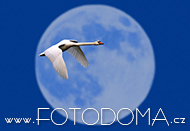Beskydy Bird Area

Gig_1001852 © Fotodoma.cz
Pustevny, Beskydy protected landscape area, North Moravia, Czech Republic
Special Protection Area Beskydy (Beskids) Bird Area
Size: 41702.0373 ha
Site code: CZ0811022
Altitude: 384 - 1320 meters above sea level
Region: Moravian-Silesian Region, Zlin Region
Coordinates: 49.561944N, 18.556389E
Longitude: E 18°33'23''
Latitude: N 49°33'43''
Beskids (Beskydy) special protection area is situated in the north-eastern Moravia in the mountains called Moravian-Silesian Beskids near the borders with Slovakia. Bird area is approximately a third of the Beskids Protected Landscape Area (chráněná krajinná oblast Beskydy, CHKO). In the area is situated seven national nature reserves (národní přírodní rezervace, NPR) – Kněhyně - Čertův mlýn, Mazák, Mionší, Pulčín - Hradisko, Radhošť, Razula and Salajka, national natural monument Valašské muzeum v přírodě (národní přírodní památka Valašské muzeum v přírodě, NPP), fifteen nature reserves and twenty natural monuments.
The area consists of three ranges of mountains - Moravian-Silesian Beskids (Moravskoslezské Beskydy), Vsetin Hills (Vsetínské vrchy) and a part of Maple Mountains (Javorníky). Mountains are structured by deep valleys and around 70% of the area is covered by forests, mainly spruce ones. Vestigial natural forests are specially protected mostly in reserves. In the southern parts can be seen flower meadows with orchids. In all the area are plentiful water courses and also four valey water reservoirs.
In this bird area is protected ten bird species - the black stork (Ciconia nigra), the black woodpecker (Dryocopus martius), the three-toed woodpecker (Picoides tridactylus), the hazel grouse (Bonasa bonasia, Tetrastes bonasia), the Eurasian pygmy owl (Glaucidium passerinum), the red-breasted flycatcher (Ficedula parva), the Ural owl (Strix uralensis), the white-backed woodpecker (Dendrocopos leucotos), the western capercaillie (Tetrao urogallus) and the grey-headed woodpecker (Picus canus).
The black stork (Ciconia nigra) is nesting mostly in the specially protected areas - reserves. The black woodpecker (Dryocopus martius) prefers old stand, deciduous forests with beeches, sometimes even spruce monocultures. It is evenly spread through all the bird area. The three-toed woodpecker (Picoides tridactylus) is tied to spruce or mixed forests in higher locations such as Kněhyně, Čertův mlýn, Smrk, Lysá hora, Travný, Ropice and Velký Polom. The hazel grouse (Bonasa bonasia, Tetrastes bonasia) is unevenly spread through the area, it was observed in many different types of biotope, but the highest numbers of population are situated in the surroundings of the highest mountain peaks, e.g. Smrk. The Eurasian pygmy owl (Glaucidium passerinum) range all over the area, but only in the spruce forests. The red-breasted flycatcher (Ficedula parva) can be found in beech or beech-fir forests and nests mostly up to the altitude of 900 m. The Ural owl (Strix uralensis) prefers old stands in calm leeside valleys and is evenly spread through the area with long distance among breeding places. The white-backed woodpecker (Dendrocopos leucotos) is tied to beech and sycamore old stands, mainly beech or fir-beech agricultural growths. The western capercaillie (Tetrao urogallus) used to be abundant in Beskids, but the population is now recessive. It appears at places with blueberry undergrowth and other berry plants, with bigger part of conifers - spruce or fir. Can be found mainly in the area of Smrk, Kněhyně and Čertův mlýn, also at Trojačka which lies outside the bird area. The grey-headed woodpecker (Picus canus) occurs in the deciduous forests and has similar requirements as the white-backed woodpecker (Dendrocopos leucotos).
Amongst other species regularly nesting belongs the European honey buzzard (Pernis apivorus) and the boreal owl (Aegolius funereus), migrating and nesting the lesser spotted eagle (Clanga pomarina, Aquila pomarina), next the collared flycatcher (Ficedula albicollis), the stock dove (Columba oenas), the water pipit (Anthus spinoletta) and the ring ouzel (Turdus torquatus). In the open areas occurs the corn crake (Crex crex), the common quail (Coturnix coturnix), the red-backed shrike (Lanius collurio), the common grasshopper warbler (Locustella naevia), the Eurasian wryneck (Jynx torquilla) and the whinchat (Saxicola rubetra). Along the water courses is nesting the white-throated dipper (Cinclus cinclus), the grey wagtail (Motacilla cinerea) and the white wagtail (Motacilla alba), rarely also the common kingfisher (Alcedo atthis).
Demarcation of area (map works only in some browsers)


